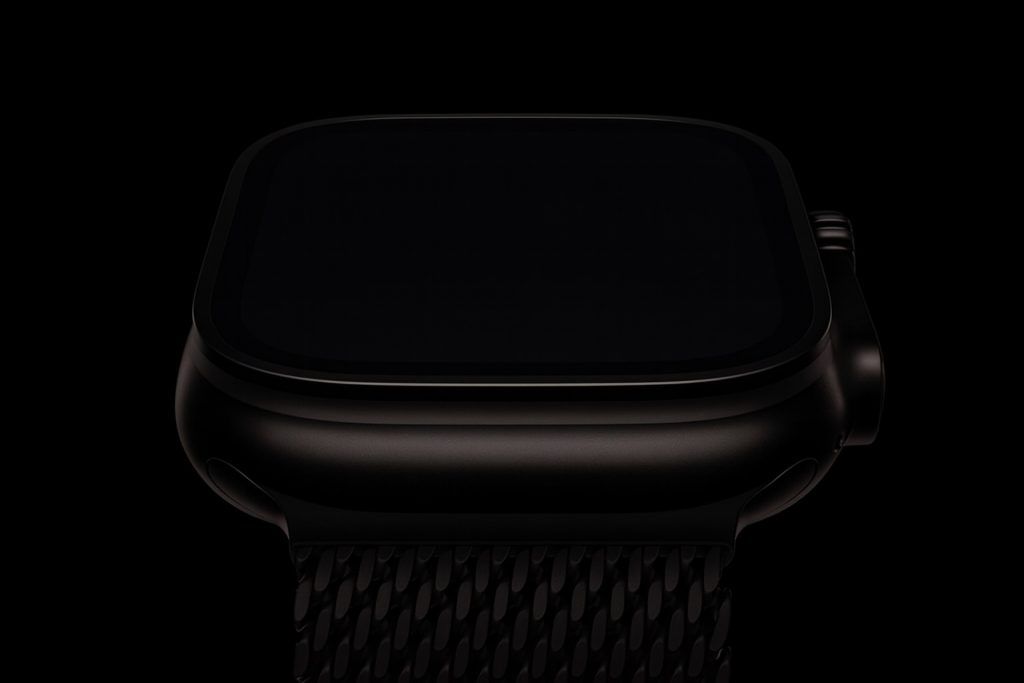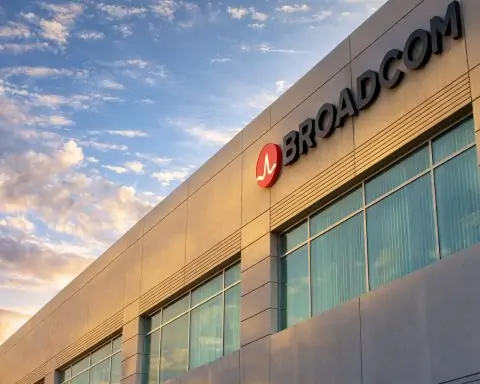- Pixel 10 Pro ships with Android 16 at launch and Google guarantees 7 years of OS updates, security patches, and feature drops.
- Pixel 10 Pro preserves the Pixel camera bar design, is slightly thicker than the Pixel 9 Pro, and moves the SIM tray to the top-left edge (with some regions moving to eSIM only).
- Pixel 10 Pro features a 6.3-inch flat OLED display with QHD+ resolution, 120Hz LTPO refresh, Gorilla Glass Victus 2, and brightness up to about 2,250 nits (potentially 3,000 nits in burst mode).
- The Pixel 10 Pro camera system uses a 50 MP main sensor, 48 MP ultrawide, 48 MP 5× telephoto, a 42 MP front camera, and supports 100× Super Res Zoom plus telephoto-based macro capabilities.
- Under the hood, Pixel 10 Pro uses the Tensor G5 on a 3nm process from TSMC, delivering 20–25% faster CPU/GPU and an upgraded TPU for on-device AI.
- Pixel 10 Pro comes with 16 GB of RAM, storage options from 256 GB to 512 GB or 1 TB, and uses UFS 4.0 storage with no microSD slot.
- Battery is around 4,870 mAh on the Pixel 10 Pro, 5,200 mAh on the Pixel 10 Pro XL, with up to 29W wired charging (39W on the XL) and 15W wireless charging via Qi2.
- Pixel Snap magnets are built into the chassis, making Pixel the first flagship Android to support full Qi2 magnetic wireless charging with compatible accessories.
- AI-focused software features include Magic Cue, Camera Coach, and on-device Conversational Photo Editing powered by Google Gemini.
- Launch timing and market strategy position the Pixel 10 series as August releases with competitive pricing, plus expanded availability to markets like Mexico.
Leaked renders of the Pixel 10 series show Google sticking with its signature camera bar design and introducing new colors like “Indigo” blue and “Limoncello” green [1].
Android 16: Pixel’s First Taste of the Future
The Pixel 10 Pro will be one of the very first devices to ship with Android 16, and Google pulled out all the stops to ensure its latest phone showcases everything the new OS offers. In fact, Google accelerated the Android 16 release to have it ready before the Pixel 10 launch [2]. Out of the box, users can expect all of Android 16’s enhancements – from streamlined “live” notifications that update in real-time (for things like food deliveries and ride-shares) to smarter notification grouping that cuts clutter [3] [4]. Android 16 also packs improved accessibility (like letting hearing-aid users harness the phone’s microphone for clearer calls [5]) and beefed-up security under the new Advanced Protection settings to guard against malware and phishing [6]. In short, Pixel 10 Pro owners will get Google’s latest and greatest software on day one [7].
Google is also promising unprecedented longevity for the Pixel 10 Pro’s software support. The company now guarantees 7 years of OS updates, security patches, and “Feature Drop” improvements for its phones [8] [9]. That means a Pixel 10 Pro purchased in 2025 should keep getting new Android versions and features into 2032, outlasting even Apple’s typical iPhone update window. This industry-leading update commitment gives Pixel 10 Pro buyers some serious peace of mind about the device’s long-term value.
Familiar Design with Refined Hardware
Google isn’t radically reinventing the wheel for its 10th-generation Pixel – in fact, the Pixel 10 Pro’s exterior closely resembles last year’s Pixel 9 Pro. As one tech writer put it, “the Pixel 10 series is identical to last year’s design for all intents and purposes… if it ain’t broke, don’t fix it” [10]. That means the Pixel 10 Pro retains the modern, minimalist look introduced back on the Pixel 6: a clean front face with slim bezels and a distinctive horizontal camera bar spanning the back. The camera bar still houses three lenses and a flash, but aside from a new sensor layout (more on that later) it’s the same iconic design Pixel fans know and love. Google appears to be “playing it extremely safe” on the hardware design this year [11], opting for minor tweaks over any dramatic overhaul.
That’s not to say nothing has changed. The Pixel 10 Pro’s chassis is reportedly a hair thicker and differently proportioned than the Pixel 9, meaning older cases likely won’t fit perfectly [12]. (Google moved the SIM tray to a new spot – now on the top-left edge – and in some regions the physical SIM slot is gone entirely in favor of eSIM only [13].) The build materials remain flagship-grade, with an aluminum frame, matte glass back, and IP68 water resistance expected – but one leak hints at titanium alloy being used for the frame on some models for extra strength, which would mirror Apple’s recent use of titanium in iPhones [14]. On the front, we’re likely looking at a 6.3-inch OLED display (flat, not curved) protected by Gorilla Glass Victus 2, just like last year [15] [16]. The Pro’s screen will once again be QHD+ resolution with up to 120Hz refresh rate, using LTPO tech to dynamically scale from 1Hz to 120Hz for smoothness when you need it and battery savings when you don’t [17] [18]. One nice upgrade: peak brightness. The Pixel 10 Pro’s display can reportedly hit around 2,250 nits (or even 3,000 nits in burst mode) – a ~200–500 nit jump that should make it even easier to see in direct sunlight [19] [20]. Google is clearly fine-tuning rather than revolutionizing the hardware design, focusing on polish and usability.
Colors are one area where Google continues to have fun. The Pixel 10 Pro and its siblings come in an array of new hues. The standard Pixel 10 (non-Pro) gets bolder choices – a vibrant “Indigo” blue, a soft green called “Limoncello,” a silvery “Frost,” and Google’s staple black (“Obsidian”) [21]. By contrast, the Pixel 10 Pro line sticks to more muted, premium tones: Obsidian (black), Porcelain (white/cream), Jade (a subdued smoky green), and Moonstone (gray-blue) [22]. These names popped up in multiple leaks, suggesting Google’s final palette mixes the playful with the sophisticated. One thing to note: the regular Pixel 10 is said to have matte-finished aluminum rails, while the Pro models feature glossy metallic sides [23] – a small aesthetic difference carried over from last year. Overall, the Pixel 10 Pro looks instantly recognizable as a Pixel, right down to that two-tone back and camera bar. It may not turn heads with a radical new look, but Google is clearly confident in the design language it established over the past few generations.
Tensor G5: Google’s Next-Gen Chip with AI at the Core
Under the hood, the Pixel 10 Pro is powered by Google’s new Tensor G5 chipset, and this is where some of the biggest improvements lie. The Tensor G5 represents a major leap forward for Google’s in-house silicon, primarily because Google switched manufacturing to TSMC’s cutting-edge 3nm process [24] [25]. (Previous Tensor chips were made by Samsung’s foundry, which struggled with efficiency.) Thanks to TSMC’s 3nm tech, the Tensor G5 is roughly 20–25% faster in CPU and GPU performance compared to last year’s Tensor G4 [26]. Early leaked benchmarks even suggest Tensor G5 can finally compete with Qualcomm’s latest Snapdragon 8 series chips in raw speed [27] – a huge milestone, given prior Tensor generations tended to lag behind the competition in horsepower. This should make the Pixel 10 Pro feel much snappier in day-to-day tasks, with smoother gaming and app performance, all while running cooler and more efficiently than before [28] [29]. One insider went so far as to say “Pixel 10 might finally have the snappy performance and battery efficiency to truly compete…not just [on] AI smarts” [30].
But Google’s goal with Tensor isn’t just to win benchmark wars – it’s to make the Pixel the smartest phone on the market. As a Google enterprise blog noted, “Google isn’t looking to win the benchmark wars… Its goal is more ambitious: to create a flawless user experience where AI and hardware work in perfect harmony.” [31] The Tensor G5 comes with an upgraded Tensor Processing Unit (TPU) – essentially the AI brain – that enables faster on-device machine learning and computer vision tasks [32]. Google has reportedly taken full control of the chip’s Image Signal Processor as well [33] [34], which means the Pixel’s renowned computational photography can be pushed even further via custom silicon. From voice recognition to real-time translation to image processing, the Pixel 10 Pro’s chip is tuned to excel at AI-heavy tasks that leverage Google’s prowess in machine learning. On-device generative AI is a big theme – the Tensor G5 is powerful enough to run advanced models like Stable Diffusion image generation locally [35] [36], which opens the door to new features (Google even hinted at “post-capture generative AI” for video editing on this chip [37] [38]).
All this silicon wizardry is backed by plenty of memory and storage. The Pixel 10 Pro comes with 16 GB of RAM – a bump up from the 12 GB in last year’s Pixel 8/9 Pro, giving more headroom for multitasking and AI workloads [39]. Storage starts at 256 GB on the Pro (Google is ditching the 128 GB option for Pro models this year) and goes up to 512 GB or even a 1 TB top-end model [40] [41]. Crucially, Google is finally using the faster UFS 4.0 storage standard across the lineup, which means quicker app launches and file transfers [42] [43]. There’s no microSD slot (as usual), but with generous built-in storage options and Google’s cloud services in the mix, most users will be set.
In short, the Tensor G5 is shaping up to be the star of the show for Pixel 10 Pro. It might not beat Apple’s A-series chips in sheer single-core might, but it’s designed to make the Pixel a seamless, context-aware assistant at all times. Google’s strategy – as evidenced by Pixel 10 – is “betting everything on software” and tight integration with its custom silicon [44] [45]. The result is a phone that leverages AI everywhere while still delivering the speed and endurance expected of a 2025 flagship.
Cameras: New Tricks with Google’s Software Magic
Pixel phones have long been synonymous with great cameras, and the Pixel 10 Pro is doubling down on that reputation – albeit in an unconventional way. Interestingly, Google’s biggest camera shake-up is on the base Pixel 10, not the Pro. For the first time ever, the non-Pro Pixel is getting a triple-lens rear camera system [46] [47]. The standard Pixel 10 will have a wide, ultra-wide, and a 5× telephoto lens, meaning even the “budget” Pixel can pull off proper optical zoom. One Android Central writer noted, “this new camera would mark the first time Google has put a telephoto on a base Pixel, making the decision to get the base Pixel 10 much easier than in the past.” [48] Indeed, that’s a game-changer for the lineup: previously, you had to buy a Pro model to get telephoto zoom. Now the $799 Pixel 10 offers 5× optical zoom out of the box, which a PhoneArena analyst called “hard to rival” in terms of value [49].
However, to accommodate that extra lens on the smaller (and cheaper) Pixel 10, Google is reportedly using slightly lower-tier sensors for the main and ultra-wide cameras there. Leaks say the Pixel 10 (base) will use a 50 MP Samsung GN8 main sensor and a 13 MP ultrawide – notably the same sensors used in last year’s Pixel 9a midrange phone – instead of the larger 50 MP GN1 and 48 MP ultrawide found in the Pixel 9 [50] [51]. In essence, the base Pixel 10 gets a telephoto upgrade but with a small step down in sensor size for the other cameras (likely to save cost and space). Google is betting that its software will more than make up the difference. As one report put it, “don’t let the megapixel counts deceive you – Google’s image processing can likely extract excellent quality, and the addition of optical zoom means overall the Pixel 10 should be a camera upgrade on all counts.” [52] [53] In other words, even with slightly smaller sensors, the base model’s photos should still shine, and now you can get crisp zoom shots that were previously exclusive to Pixel Pro devices.
For the Pixel 10 Pro and Pro XL, the hardware is expected to carry over the proven setup from last year’s Pixel 9 Pro series [54] [55]. That means a 50 MP main camera (using a large 1/1.3-inch sensor), a 48 MP ultra-wide, and a 48 MP 5× telephoto, plus a high-resolution front camera around 42 MP for detailed selfies [56] [57]. At first glance, this sounds like “no change” – the Pixel 10 Pro’s lenses and megapixels match the Pixel 9 Pro. But Google is undoubtedly refining the imaging pipeline. Thanks to the new Tensor G5 ISP and algorithms, the Pixel 10 Pro is tipped to get 100× “Super Res Zoom” capabilities [58] (leveraging that 5× optical lens with AI upscaling to reach extreme zoom levels, much like Samsung’s Space Zoom). We also hear it will enable macro photography using the telephoto lens’ focus capabilities [59] – a trick to capture close-ups with depth of field. Essentially, Google is using software to squeeze more functionality out of the existing camera hardware.
On the software side, AI-powered photography features are a huge focus. One highlight is “Camera Coach,” an upcoming Pixel 10 feature that acts like an on-demand photography mentor. This Gemini AI-powered tool will give you real-time tips for better shots – suggesting things like adjusting your angle, framing, or lighting – right in the camera app [60] [61]. It’s like having a professional photographer whispering advice as you line up a photo. Google’s aim is to help users get the most out of the cameras, teaching techniques on the fly. Another rumoured feature is “Conversational Photo Editing,” which lets you talk to the Google AI (Gemini) to make edits to your photos [62] [63]. Imagine saying, “Make my face a bit brighter and blur the background,” and the Pixel executes those edits in Google Photos without you fiddling with sliders – that’s the idea. This voice-driven editing sounds similar to a leaked tool called “Speak-to-Tweak” [64] [65], and it builds on Google’s strength in natural language processing.
Google is also expanding on clever features introduced last year. “Add Me” mode, which debuted on Pixel 9, will of course be present – this is the nifty trick where the phone can take a group photo and then magically insert the photographer into the shot after the fact [66]. (You snap a photo of the group, then step in and the camera takes another shot – AI merges them so it appears you were in the group all along [67].) Google teased this in Pixel 10 promos, calling it an example of “AI that people can understand” – a fun, practical use of machine learning for everyday users [68]. Expect improved Magic Eraser and Magic Editor tools as well, and perhaps new ones like “Magic Mirror” (a mysterious feature name that leaked with no details [69] – speculation ranges from AR try-on filters to some kind of reflective AI effect). Also rumored is on-device video AI editing, potentially allowing you to remove objects or even change backgrounds in video, right on the phone [70]. These would leverage the Tensor G5’s beefed-up AI performance heavily.
All told, Google’s camera strategy with Pixel 10 Pro is to use software and AI to leapfrog what the raw hardware might suggest. The Pro’s camera hardware might be familiar, but the “digital darkroom” behind the scenes is new and more powerful [71] [72]. By integrating the latest Gemini AI model (a mobile-optimized version) directly into the device, Google is aiming for a photography experience where the Pixel 10 Pro not only takes fantastic shots automatically as Pixels always have, but also teaches you and lets you create in ways no other phone currently does. From ultra-zoom moon shots to perfectly framed portraits with AI guidance, the Pixel 10 Pro is poised to be a creative powerhouse in your pocket.
Battery Life and Charging: Small Boosts, New Wireless Tricks
Powering all these features, the Pixel 10 Pro comes with a slightly larger battery this year – albeit not a massive jump. The battery capacity is around 4,870 mAh, up from ~4,700 mAh on the Pixel 9 Pro [73] [74]. That’s only a few percentage points more juice, but combined with the Tensor G5’s efficiency gains (thanks to that 3nm process), we can expect a modest but welcome improvement in battery life. In EU regulatory testing, the Pixel 10 Pro actually earned an “A” rating for battery, with Google claiming it can sustain strong endurance through 1,000+ charge cycles and survive hundreds of drop tests without battery issues [75]. Real-world, the Pixel 10 Pro should comfortably last a full day, and potentially more, of typical use. The larger Pixel 10 Pro XL model is said to pack a 5,200 mAh battery (the biggest ever in a Pixel) [76] [77], while the smaller base Pixel 10 has about 4,970 mAh [78] – interestingly, the small Pixel 10 battery is slightly higher capacity than the Pro’s, likely because the Pro’s higher-res screen and additional features demand more power. All three devices aim to get you through a day and then some, and Google’s adaptive battery software will learn your usage patterns to stretch longevity further.
When it is time to top up, Google has given the Pixel 10 series a tiny bump in charging speeds. The Pixel 10 Pro supports up to ≈29W wired charging, up from ~27W last year. In practical terms, you’re looking at roughly 50% charge in half an hour and a full charge around the 70-80 minute mark for the Pro. The larger Pixel 10 Pro XL can charge at 39W (since it has a bigger battery to fill), which might get it from 0 to 100% in just about an hour or a tad over [79] [80]. These speeds are still conservative – nowhere near the 65W+ supercharging some Chinese flagships boast – but Google tends to prioritize battery health over breakneck speeds. For wireless charging, all Pixel 10 models will support 15W wireless charging on the Qi standard [81]. Not coincidentally, 15W is the max of the new Qi2 certification that Google is embracing. It’s a bump from the Pixel 9’s 12W Qi charging and means wire-free charging will be a bit quicker and standardized.
Google’s new “Pixel Snap” system brings MagSafe-style magnetic wireless charging to the Pixel 10 series. The phones have built-in magnets in the chassis, allowing accessories like this Qi2 charger to snap on securely [82] [83].
Perhaps the coolest charging upgrade is Google’s answer to Apple’s MagSafe: built-in magnetic wireless charging. The Pixel 10 Pro is one of the first Android phones to integrate the Qi2 standard with magnets in the phone itself, a feature Google is branding as “Pixel Snap.” This means the Pixel 10 Pro has a ring of magnets under the back casing that allows chargers, battery packs, mounts, and other accessories to snap onto the phone and align perfectly for wireless charging [84] [85]. It effectively replicates Apple’s MagSafe ecosystem on Android. You can simply click a magnetic charger onto the back of your Pixel – no fiddling to line it up. Google will offer first-party Pixel Snap cases and accessories and is opening up the ecosystem for third parties to create battery packs, car mounts, wallets, and more that attach magnetically [86] [87]. This has been a long time coming (Qi2 was announced back in 2023, but few Android makers jumped on it). In fact, some competitors like Samsung and OnePlus only implemented “Qi2-ready” support via special cases, rather than putting magnets in the phones [88] [89]. Google is going all-in: Pixel 10’s chassis has the magnets built-in, making it the first flagship Android device to truly embrace magnetic wireless charging. As a tech commentator noted, this bold move “finally” brings an Android on par with Apple’s convenient system – and may leave rivals who shied away from full Qi2 support looking “embarrassed” [90] [91]. For Pixel users, it opens up a world of snap-on accessories and ensures optimal alignment for efficient charging every time. Google sees Pixel Snap as the start of a whole accessory ecosystem built around the Pixel, so this is more than just charging – it’s about expanding the Pixel’s functionality through modular add-ons (think camera grips, dock mounts, etc., all magnetically attached). It’s a clever play that fits perfectly with Google’s hardware strategy this year: subtle hardware improvements that unlock new experiences through software and ecosystem.
How the Pixel 10 Pro Stacks Up to Apple’s iPhone 17 Pro
No Pixel launch would be complete without the inevitable comparisons to Apple’s latest. In this case, the Pixel 10 Pro arrives just ahead of Apple’s 2025 flagship, the iPhone 17 Pro (expected in September 2025). On paper, these two will be natural rivals – both are around 6.3-inch premium phones vying for the title of most advanced handset. So how does Google’s AI-centric phone stack up against Apple’s upcoming juggernaut?
Design & Build: Interestingly, Apple is also refreshing its design in 2025 – and in some ways borrowing a page from Google. The iPhone 17 Pro is heavily rumored to adopt a new half-glass, half-metal rear design with a horizontal “camera bar” bump across the back [92] [93]. That’s right, the next iPhone may sport a camera bar not unlike the Pixel’s, albeit with Apple’s own styling. Apple is said to be ditching the titanium frame from the 15/16 Pro and reverting to an aluminum frame for the 17 Pro [94]. The top half of the iPhone’s back could be aluminum (for durability) while the bottom remains glass (to allow wireless charging signals through) [95] [96]. This dual-tone construction might make the iPhone 17 Pro lighter and more drop-resistant [97] [98]. By contrast, the Pixel 10 Pro sticks with an aluminum frame and all-glass back. Both phones will be IP68 water-resistant. The dimensions are comparable: Pixel 10 Pro ~6.3” display and likely similar overall size; iPhone 17 Pro is expected to keep a 6.3” display as well [99] [100]. Apple is also introducing a new iPhone 17 “Air” model at ~6.6” as a thin, mid-tier option [101] [102], whereas Google’s equivalent is the Pixel 10 Pro XL at 6.8”.
One major design talking point: the camera bump. Pixel’s is wide but fairly low-profile. The iPhone 17 Pro is rumored to get a massive rectangular camera bar bulge made of aluminum that spans the back of the phone [103] [104] – leaked cases show an oversized cutout for it [105] [106]. Apple might also relocate the Apple logo further down (possibly inside the MagSafe ring) to accommodate this new camera layout [107] [108]. So, visually, the iPhone 17 Pro could look quite different from its predecessors, whereas the Pixel 10 Pro looks much like prior Pixels. Google’s choice to keep a familiar design might seem tame next to Apple’s bold redesign. On the other hand, Pixel fans appreciate the ergonomic refinements (matte finish, slightly smaller footprint than 6.7” competitors) and Google’s distinctive style. Materials-wise, Apple going aluminum actually matches Google’s use of aluminum – interestingly, Apple’s moving away from exotic metals while Google reportedly toyed with adding a titanium option. Both will have MagSafe-type magnet rings (Pixel with Pixel Snap, iPhone with MagSafe), so in terms of build and physical features, they are converging.
Display: Both phones feature high-end OLED displays around 6.3 inches. The Pixel 10 Pro’s screen is QHD+ (variable 1–120Hz) and can hit extremely high brightness (2000+ nits) [109]. The iPhone 17 Pro is likely sticking with around 2556×1179 resolution (Apple’s slightly lower “Retina” pixel density) but is upgrading all iPhones to ProMotion 120Hz and LTPO this generation [110] [111]. Apple’s current iPhone 16 Pro already reaches ~2000 nits in sunlight, and the iPhone 17 Pro might improve that further with new OLED tech (the base 17 and new Air are said to use the 16 Pro’s panel with 30% higher brightness than previous screens) [112] [113]. So in daylight visibility, they’ll both be excellent. Apple had planned an anti-reflective coating for the 17 Pro display, but reports say it hit production snags and might not debut this year [114] [115]. Both will have always-on display capability (Pixel’s always-on uses At a Glance info; iPhone’s shows dimmed Lock Screen widgets). There’s parity in refresh rate and OLED quality now, whereas a couple years ago Apple kept 120Hz exclusive to Pro models and base iPhones were 60Hz. In 2025, every iPhone 17 variant will have 120Hz LTPO screens [116] [117], just like virtually all Pixels are 120Hz. So this battleground is mostly a draw: expect vibrant 6+ inch OLEDs with smooth scrolling on both. Pixel pushes higher resolution; iPhone’s calibration and color might differ but both are top-tier.
Performance: Apple’s iPhones have traditionally led in raw CPU/GPU power, and the iPhone 17 Pro will feature the new Apple A19 Pro chip, fabbed on an enhanced 3nm process (likely TSMC N3P) [118] [119]. Apple will probably continue its streak of class-leading single-core performance and graphics might. That said, the Pixel 10 Pro’s Tensor G5 narrowing the gap to Snapdragon 8 Gen chips means it’s closer than ever to Apple’s league [120]. In everyday use, Pixel 10 Pro should feel fast and fluid; any remaining advantage of A19 will show up in heavy 3D gaming or certain intensive apps, but not so much in routine tasks. Where the Tensor G5 might actually have an edge is AI and machine learning tasks – it’s purpose-built for things like real-time language transcription, image segmentation, etc., whereas Apple relies on very fast CPU+Neural Engine but has been more conservative in on-device AI features. Pixel 10 Pro’s integrated TPU and Google’s AI expertise mean things like live language translation, voice typing with AI, and on-device content recognition could be faster or more capable on the Pixel. Apple’s A19 will surely have an upgraded Neural Engine too, but Apple tends to use it for features like improved Siri processing, camera enhancements, and AR (e.g. Vision Pro interactions). Google, meanwhile, is going all-in on AI as a user-facing feature set (see Magic Cue, Assistant with Bard, etc.).
AI and Software: This is perhaps the biggest differentiator. The Pixel 10 Pro is launching with Android 16 and Google’s full suite of AI features. Its headliner is the new “Magic Cue” proactive assistant, which reads on-screen context and suggests info or actions without you even asking [121] [122]. For example, if a friend texts you “What’s your flight number?” Magic Cue will automatically pull up that info from your Gmail and display it, ready to send [123] [124]. This kind of predictive, on-device AI service is something Google is pushing hard. It’s effectively a next-gen Google Assistant that anticipates needs rather than waiting for “Hey Google” commands. And importantly, Magic Cue runs entirely on-device using the Pixel’s AI chip for privacy and instant response [125] [126]. Apple’s Siri, in contrast, still mostly works on a request-response model and often needs cloud processing. Apple did announce “Assistant with Bard” integration for Pixel 9 (a more conversational voice assistant tapping Google’s large language model) [127], whereas Siri is just beginning to leverage some on-device processing for certain tasks. In short, the Pixel 10 Pro is likely to feel like a more “intelligent” phone that actively helps you, thanks to Google’s AI features like Magic Cue, Call Screen, Hold for Me, live Translate, etc. Apple’s iPhone 17 Pro will have the refined polish of iOS and great continuity with the Apple ecosystem (AirPods, Mac, Watch integration), but it may not match Google in AI tricks this round. Apple is rumored to be working on its own AI assistant improvements, but nothing as concrete as Magic Cue has leaked.
One might say the Pixel 10 Pro is the phone embodiment of Google’s AI-first vision, while the iPhone 17 Pro continues Apple’s hardware-first, software-stability approach. Both strategies have merit: Pixel might do more for you automatically (like filtering spam calls or suggesting calendar tweaks), whereas iPhone often requires user initiation but executes extremely smoothly when it does (and ties into Apple’s broader ecosystem services seamlessly).
Camera Showdown: In photography, it’s going to be a very interesting comparison. The Pixel 10 Pro relies on last year’s camera sensors but supercharged by new software and AI. The iPhone 17 Pro, according to leaks, is getting some major camera upgrades too. Notably, Apple may upgrade the telephoto on the iPhone 17 Pro/Pro Max to a higher optical zoom. The iPhone 15 Pro Max introduced a 5× periscope zoom (while the smaller 15 Pro stayed at 3×). By 2025, rumor has it both iPhone 17 Pro and Pro Max will feature a 5× or greater periscope zoom lens [128] [129]. In fact, one leak claims the iPhone 17 Pro Max could push to 8× optical zoom with a new “Tetraprism” lens and even include a moving lens element for variable optical zoom lengths [130] [131]. Apple is also reportedly using 48 MP sensors for all three rear cameras on the Pro Max: wide, ultra-wide, and telephoto all 48MP, making it the first triple-48MP iPhone [132] [133]. That would match the Pixel’s high megapixel count on each lens (Pixel Pro is 50/48/48). Apple is expected to bring 48MP ultra-wide to the Pro models and bump the telephoto from 12MP to 48MP too [134], which would help it in detail retention and enable features like 8K video recording [135] [136]. The iPhone 17 Pro series is also rumored to introduce a mechanical variable aperture on the cameras [137] [138], letting the lens physically adjust aperture (for better low-light vs depth-of-field control), which is a very DSLR-like feature. The Pixel 10 Pro doesn’t have a variable aperture; it relies on computational bokeh (Portrait mode) for background blur.
In terms of results, both phones will likely produce stunning photos but with different philosophies. Pixel will continue to excel in dynamic range and low-light via Night Sight and its HDR+ algorithms, and now offers new creative modes (astrophotography, long exposure, etc.). The Pixel’s AI “Camera Coach” is something iPhone doesn’t have – Apple won’t tell you how to frame a shot, it just tries to optimize the shot you take. Apple, however, might maintain an edge in video recording quality. The iPhone 17 Pro is expected to support 8K video finally [139] [140], catching up to what some Android phones (and even Qualcomm chips) have enabled. Google’s Pixels have so far capped at 4K; it’s unclear if Pixel 10 Pro will venture into 8K video. If not, Apple could claim victory for videographers. On the front camera, Apple is making a big leap: all iPhone 17 models reportedly get a 24 MP front camera (up from the long-standing 12 MP) for sharper selfies [141] [142]. Google’s Pixel 10 Pro has a 42 MP front camera (Pixel 9 Pro did, likely same in 10 Pro) [143], so both are capable of very high-res selfies – though Apple might leverage that for Face ID improvements or new FaceTime features.
Battery & Charging: The Pixel 10 Pro’s ~4870 mAh battery is large by flagship standards, but Apple is apparently finally increasing battery sizes too. Rumors point to the iPhone 17 Pro Max having around a 5,000 mAh battery (on par with a Galaxy Ultra) [144] [145], which is a jump for Apple. The smaller 17 Pro likely will be in the 4,000+ mAh range (Apple doesn’t disclose exact, but if Pro Max is 5000, Pro could be ~4200-4500). With Apple’s efficiency, the iPhone 17 Pro could be a battery life champ. Pixel 10 Pro should still comfortably last a day, but Apple’s tight hardware-software integration often yields longer screen-on times. For charging, Apple is rumored to allow up to 35W wired charging on iPhone 17 Pro models (the 16 Pro was around 27W max), and notably, Apple will support the Qi2 wireless standard up to 25W for third-party chargers [146] [147]. So both Pixel and iPhone are aligning on wireless charging tech – Pixel Snap and MagSafe are cross-compatible with Qi2. The iPhone 17 Pro won’t charge dramatically faster than Pixel (35W vs 29W is negligible in real terms), and Apple’s stance on battery health is similar to Google’s. One advantage for Pixel: Google includes features like Battery Share (wireless reverse charging to charge your earbuds on the phone) and very granular battery saver controls. Apple still doesn’t offer reverse wireless charging on iPhones (at least not yet – no rumors of 17 Pro having it). Both have adaptive charging at night to preserve battery health.
Price & Value: Google has positioned the Pixel 10 lineup very competitively. In Europe, leaked prices put the 128GB Pixel 10 Pro at €1,099 [148] [149], and in the US the Pixel 10 Pro is expected to start around $1,099 for 256GB (since 256 GB is the new base storage for Pro) [150] [151]. That’s about a $100 hike from last year, but you’re getting double the base storage. The Pixel 10 (non-Pro) stays at $799 base, undercutting the iPhone pricing for a flagship-tier device with a telephoto camera. Apple’s iPhone 17 Pro, by contrast, is rumored to see a price increase due to component costs – possibly $50 higher than the iPhone 16 Pro [152] [153]. If the iPhone 16 Pro was $999 for 128GB, the iPhone 17 Pro could start around $1,049 (128GB) in the US. That means for a similar ~$1,099 price, one could get a 256GB Pixel 10 Pro or a 128GB iPhone 17 Pro. Google often sweetens the pot with pre-order perks (like throwing in a Pixel Watch or Pixel Buds in past launches), whereas Apple rarely offers freebies. From a value perspective, one analysis noted that a $999 Pixel 10 Pro “may look like a bang-for-buck flagship” compared to competitors that charge more for similar specs [154] [155]. Indeed, against Samsung’s Galaxy S25 Ultra (often ~$1,199+) or an iPhone 17 Pro Max likely well above $1,199, the Pixel 10 Pro is positioned as the affordable ultra-flagship. If you consider that longevity (7 years updates) and all the AI features are included out of the box – no subscriptions needed – Google’s offering is compelling. Apple will always command a premium for its brand and ecosystem, but Google is clearly trying to undercut on pricing while matching/exceeding on certain specs.
In summary, the Pixel 10 Pro vs. iPhone 17 Pro matchup is shaping up as a clash of titans with different philosophies. The Pixel 10 Pro bets on AI-centric user experiences, open ecosystems (USB-C with full compatibility, RCS messaging, etc.), and value for money. The iPhone 17 Pro leans on Apple’s renowned build quality, performance, and integration with devices like the Apple Watch and Mac. Camera capabilities will be neck and neck, each with some unique tricks (Pixel’s AI software vs iPhone’s potential hardware like variable zoom). And in many areas – display tech, wireless charging, 5G, UWB – the two are closer than ever. It may ultimately come down to whether you prefer Android’s flexibility and Google’s AI smarts or iOS’s polished simplicity and Apple’s ecosystem. Either way, it’s exciting to see Google truly going head-to-head with Apple at the high end, rather than playing it safe.
A Pixel for Google’s AI Strategy: The Broader Picture
The Pixel 10 Pro isn’t just another Android phone – it’s the culmination of 10 generations of Pixel and stands as a testament to Google’s broader mobile strategy. With this device (and its siblings Pixel 10, 10 Pro XL, and 10 Pro Fold), Google is showcasing what it does best: AI and integration. CEO Sundar Pichai and other Google execs have repeatedly voiced that we’re entering an “AI-first” era, and Pixel 10 Pro is very much built in that image. Google has essentially turned the phone into a personal AI companion. Features like Magic Cue and Camera Coach illustrate Google’s vision of “ambient computing” – where technology proactively assists you in the background [156] [157]. As one Pixel insider put it, Pixel 10’s new assistant is designed to anticipate your needs and offer help proactively, without you even saying ‘Hey Google.’ [158] This ambient AI approach differentiates Pixel from any other smartphone right now.
From a strategic standpoint, Google uses the Pixel line to drive innovation in Android and to tightly fuse hardware with its services. The Pixel 10 Pro with Tensor G5 allows Google to do things that third-party Android phones (reliant on off-the-shelf Qualcomm chips) might struggle with – for example, running a hefty AI model like Gemini on-device. In fact, Pixel 10 is expected to leverage a “Gemini Nano” model locally for features like Pixel Sense (Magic Cue) [159] [160]. This plays into Google’s strategy to weave AI through every product: the phone becomes an end-point for Google’s AI cloud services (like Bard/Gemini) and a self-sufficient AI processor for privacy-sensitive tasks. It’s a one-two punch that advances Google’s AI agenda on mobile.
Hardware-wise, the Pixel 10 series also shows Google broadening its ecosystem. This year we have not only multiple phone sizes (Pro and Pro XL) but also a second-gen foldable (Pixel 10 Pro Fold) and new wearables (Pixel Watch 4 and Pixel Buds 2a launching alongside) [161]. Google is clearly committed to building a full hardware ecosystem to rival Apple’s – phones, foldables, watches, earbuds, smart home devices, etc., all cohesively powered by Google’s software smarts. The Pixel 10 Pro Fold, for instance, addresses past Pixel Fold weaknesses (rumored to be fully dustproof at IP68 [162]) and further integrates into the lineup. And with Pixel Snap magnets, Google is even creating an accessory ecosystem from scratch, which could keep users further tied into Pixel-specific gear.
From a market perspective, Google appears more serious than ever about Pixel as a commercial success. The Pixel 10 series is launching earlier in the year (August instead of the usual October), perhaps to get a jump on iPhone and holiday sales. Google is also expanding availability – for the first time, Pixel phones will officially launch in markets like Mexico [163] (as per recent leaks), showing a push into new regions. Pricing has been kept competitive, suggesting Google is willing to sacrifice some margin to gain users. After earning critical acclaim with the Pixel 6, 7, 8, Google’s next step is to capture a bigger slice of the premium phone market, and the Pixel 10 Pro is its statement product for that ambition.
In the grand scheme, the Pixel 10 Pro is as much a tech showcase as it is a consumer device. It demonstrates Google’s vision for how hardware can be a vessel for Google’s services and AI. As an example, consider that Pixel 10 will ship with features tied into Google’s ecosystem: Call Screen and Hold for Me use Google Duplex AI to handle calls; the Recorder app uses Google’s speech AI for transcription; Live Translate leverages Google Translate’s prowess. Now with Magic Cue, it even plugs into Gmail, Calendar, Maps, and more to unify your digital life contextually [164] [165]. All this tight integration can only really be achieved when one company controls the hardware, software, and underlying services – which is exactly what Google is doing, following Apple’s playbook but with its own AI-driven flavor. In a sense, Pixel 10 Pro is the purest form of Google’s mobile vision, where your phone is not just a communications device, but a proactive assistant, an entertainment hub, a camera studio, and a secure key to your digital world – all supported directly by Google’s advances in AI and cloud.
Early commentary from tech experts underscores the significance of this release. Many see Pixel 10 Pro as Google’s chance to truly stand toe-to-toe with Apple and Samsung at the high end. It’s telling that Google planned a star-studded launch event for the Pixel 10 (with celebrities like Jimmy Fallon, Steph Curry, and the Jonas Brothers making appearances [166]), a level of hype usually reserved for mainstream consumer products, not niche enthusiast phones. Clearly, Google wants the world to know that Pixel has arrived in a big way on its 10th anniversary. As one analyst put it, “a $799 Pixel 10 with flagship-grade cameras and AI features would be ‘hard to rival’… and a $999 Pixel 10 Pro may look like a bang-for-buck flagship” compared to others [167] [168]. Google is hoping consumers see it that way too.
In conclusion, the Google Pixel 10 Pro is shaping up to be one of 2025’s most compelling smartphones. It marries incremental but thoughtful hardware upgrades – a refined design, brighter display, better battery, new Tensor chip – with bold AI-driven software innovations that could change how we use our phones daily. Whether it’s helping you frame a perfect photo, reminding you of important info exactly when you need it, or translating a conversation on the fly, the Pixel 10 Pro aims to be “your future phone” in every sense [169]. And by taking on Apple’s iPhone 17 Pro in everything from camera tech to build quality to update longevity, Google is sending a message that Pixel has matured into a true flagship contender. Ten generations in, the Pixel has come of age – and it’s bringing Google’s AI future along with it.
Sources: Google (The Keyword) [170] [171]; 9to5Google [172] [173]; Android Authority [174] [175]; Android Central [176] [177]; Tom’s Guide [178] [179]; MacRumors [180] [181]; Android Headlines [182]; TS2 (TechSummarized) [183] [184].
References
1. 9to5google.com, 2. www.androidcentral.com, 3. blog.google, 4. blog.google, 5. blog.google, 6. blog.google, 7. ts2.tech, 8. ts2.tech, 9. ts2.tech, 10. 9to5google.com, 11. ts2.tech, 12. 9to5google.com, 13. 9to5google.com, 14. www.youtube.com, 15. ts2.tech, 16. ts2.tech, 17. ts2.tech, 18. ts2.tech, 19. ts2.tech, 20. ts2.tech, 21. 9to5google.com, 22. 9to5google.com, 23. 9to5google.com, 24. 9to5google.com, 25. 9to5google.com, 26. ts2.tech, 27. ts2.tech, 28. www.applivery.com, 29. www.applivery.com, 30. ts2.tech, 31. www.applivery.com, 32. ts2.tech, 33. www.applivery.com, 34. www.applivery.com, 35. ts2.tech, 36. ts2.tech, 37. ts2.tech, 38. ts2.tech, 39. ts2.tech, 40. www.androidauthority.com, 41. www.androidauthority.com, 42. 9to5google.com, 43. 9to5google.com, 44. www.applivery.com, 45. www.applivery.com, 46. ts2.tech, 47. ts2.tech, 48. ts2.tech, 49. ts2.tech, 50. ts2.tech, 51. ts2.tech, 52. ts2.tech, 53. ts2.tech, 54. 9to5google.com, 55. 9to5google.com, 56. 9to5google.com, 57. 9to5google.com, 58. 9to5google.com, 59. 9to5google.com, 60. www.androidcentral.com, 61. www.androidcentral.com, 62. www.androidcentral.com, 63. www.androidcentral.com, 64. ts2.tech, 65. ts2.tech, 66. www.androidcentral.com, 67. www.androidcentral.com, 68. www.androidcentral.com, 69. ts2.tech, 70. ts2.tech, 71. www.applivery.com, 72. www.applivery.com, 73. 9to5google.com, 74. 9to5google.com, 75. 9to5google.com, 76. 9to5google.com, 77. 9to5google.com, 78. 9to5google.com, 79. ts2.tech, 80. ts2.tech, 81. ts2.tech, 82. 9to5google.com, 83. 9to5google.com, 84. 9to5google.com, 85. 9to5google.com, 86. 9to5google.com, 87. 9to5google.com, 88. 9to5google.com, 89. 9to5google.com, 90. 9to5google.com, 91. 9to5google.com, 92. www.macrumors.com, 93. www.macrumors.com, 94. www.macrumors.com, 95. www.macrumors.com, 96. www.macrumors.com, 97. www.macrumors.com, 98. www.macrumors.com, 99. www.macrumors.com, 100. www.macrumors.com, 101. www.macrumors.com, 102. www.macrumors.com, 103. www.macrumors.com, 104. www.macrumors.com, 105. www.macrumors.com, 106. www.macrumors.com, 107. www.macrumors.com, 108. www.macrumors.com, 109. ts2.tech, 110. www.macrumors.com, 111. www.macrumors.com, 112. www.macrumors.com, 113. www.macrumors.com, 114. www.macrumors.com, 115. www.macrumors.com, 116. www.macrumors.com, 117. www.macrumors.com, 118. www.macrumors.com, 119. www.macrumors.com, 120. ts2.tech, 121. 9to5google.com, 122. 9to5google.com, 123. 9to5google.com, 124. 9to5google.com, 125. www.applivery.com, 126. www.applivery.com, 127. blog.google, 128. www.macrumors.com, 129. www.macrumors.com, 130. www.tomsguide.com, 131. www.tomsguide.com, 132. www.macrumors.com, 133. www.macrumors.com, 134. www.tomsguide.com, 135. www.macrumors.com, 136. www.macrumors.com, 137. www.macrumors.com, 138. www.macrumors.com, 139. www.macrumors.com, 140. www.macrumors.com, 141. www.macrumors.com, 142. www.macrumors.com, 143. 9to5google.com, 144. www.tomsguide.com, 145. www.tomsguide.com, 146. www.macrumors.com, 147. www.macrumors.com, 148. www.androidauthority.com, 149. www.androidauthority.com, 150. 9to5google.com, 151. 9to5google.com, 152. www.macrumors.com, 153. www.macrumors.com, 154. ts2.tech, 155. ts2.tech, 156. www.applivery.com, 157. www.applivery.com, 158. ts2.tech, 159. ts2.tech, 160. ts2.tech, 161. 9to5google.com, 162. ts2.tech, 163. www.androidauthority.com, 164. ts2.tech, 165. ts2.tech, 166. 9to5google.com, 167. ts2.tech, 168. ts2.tech, 169. 9to5google.com, 170. blog.google, 171. blog.google, 172. 9to5google.com, 173. 9to5google.com, 174. www.androidauthority.com, 175. ts2.tech, 176. www.androidcentral.com, 177. www.androidcentral.com, 178. www.tomsguide.com, 179. www.macrumors.com, 180. www.macrumors.com, 181. www.macrumors.com, 182. www.androidcentral.com, 183. ts2.tech, 184. ts2.tech









